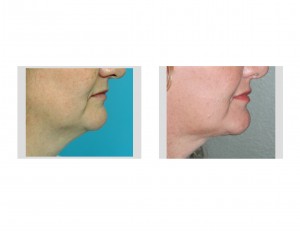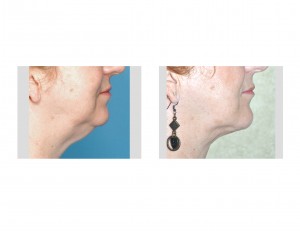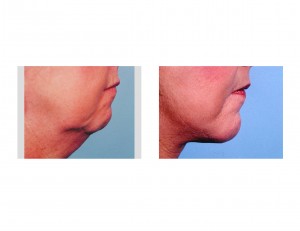The shape of one’s neck has a profound influence on the appearance of the face that sits above it. The neck is bordered by the jawline, which consists of the chin and the horizontal length of the jaw, and the outline of the neck skin The outline of the neck should be the intersection of horizontal and vertical lines which intersect at an angle point just above the thyroid cartilage. (adam’s apple) A more youthful neck angle is usually in the range of 100 to 120 degrees.
Aging of the face is usually associated with loss of a good neck angle. At fat accumulates in the neck and the skin becomes more loose and saggy, the neck angle changes. In profile, it opens up to a neck angle which can be as big as 180 degrees. When this occurs, there is no neck angle and a straight line runs directly down from the chin to the sternum.
Reshaping of the neck angle, technically known as the cervicomental angle, takes three basic approaches. The approaches often use a combination of neck tissue reduction and tightening and/or chin augmentation. How short the chin is and how much loosed skin there is in the neckdetermines whether a Type I, II, or III neck recontouring is done.



The surgical strategy to improve a poor neck angle must consider the bone (chin), the amount of fat, and the one real key…how much loose skin is there. Unlike the younger neck where the tightening of the neck skin is more likely, this is a missing element in the older neck.
Dr. Barry Eppley
Indianapolis Indiana


